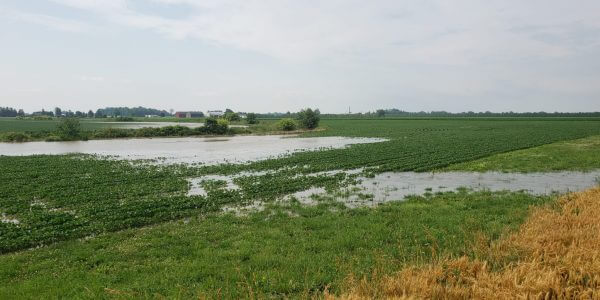It’s Stroke Awareness Week!
Peter Johnson kicks off this episode of Wheat Pete’s Words by talking about both volunteering and the importance of early stroke detection. If treated within four to six hours of onset, medical treatment can reverse most of the negative effects of a stroke. Remember the acronym FAST: F is for drooping on one side of the face; A is for arms, watch out for any problems moving your arms; S is for speech, watch out for any problems with speech; and T is time to call 911. FAST is face, arms, speech, and time to call.
Moving on to the agricultural side, with weather being a top priority for many producers with drought and heavy rains in some places, the episode provides answers to many questions including late sowing of corn, possible unseeded areas for soybeans, weed control, late nitrogen applications and concerns surrounding wheat and Fusarium head blight.
Have a question you’d like Wheat Pete to answer or field results you’d like to send him? Do you agree/disagree with something he says? Leave me a message at 1-888-746-3311, tweet me (@wheatpete), or send me an email. (email address protected).
summary
- It may not be the ideal time to talk about volunteering, but volunteering is an important part of our community, and according to a University of Maryland study, spending your time volunteering can be worth $44 per hour.
- You may think that damage to your crops is caused by birds, but it could actually be caused by insects or squirrels, so it’s important to ask questions.
- There’s a lot of weather stress right now: While areas like Renfrew, Ontario, are harvesting oats planted in April, some farmers in the greater London area have yet to plant their crop.
- If your corn isn’t planted by June 10th, then it’s 100% fine to plant it by June 15th.
- In the London area, a 70-day hybrid could be planted on July 1 and still mature, but it would not produce as much as a 100-day hybrid.
- If you think you won’t be able to plant corn by June 15th and have unseeded land, call Agricorp and let them know.
- Soybean crop insurance is due June 30th.
- The later soybeans are planted, the more important row width becomes. Narrower rows allow the canopy to grow faster. It is important to close the canopy and establish the plant before the fertile season.
- The weed suppression in soybeans is excellent with the introduction of Group 14. The downside is that with Group 14 products, if there is heavy rainfall while the soybeans are rooted in the soil, the weeds will soak up too much of the product and the plants will die. This is rare, but it does happen.
- Many herbicides require large amounts of water to effectively control weeds. Glyphosate is an exception.
- Apparently, a 4-6 second squirt of Dawn dish soap after each tank you spray will clean the filter and eliminate the foaming – it doesn’t remove any herbicide residue in the tank.
- It is economical to apply 30 to 50 pounds of nitrogen to wheat at growth stage 32. Approximately 21 days of grain fullness is required from the time of nitrogen application, but timing can be effective even after heading.
- Note that nitrogen stabilizers will slow the availability of urea if the crop is in bad need of nitrogen.
- With regards to the amount of nitrogen to apply as a side dress to corn, without enough nitrogen on and around the 5-leaf corn plants, yields will be reduced. Thirty pounds on the starter will get you through an early side dress, perhaps to 6-leaf corn. Fifty pounds will get you through perhaps to 8-leaf corn, which is still early. Growers who can wait longer have 100 pounds of nitrogen on hand.
- In areas that remain saturated with water for long periods, standing water will cause nitrogen losses. If the water dries up between rains, there will be no significant yield losses in the first day, but there may be nitrogen losses of 4-5% per day thereafter.
- Wheat is at high risk for Fusarium head blight, so spray with a fusarium fungicide even if it is a day or two late.
- Stripe rust does not affect seed quality so you can store the seed but you should buy certified seed. A T3 fungicide application will control stripe rust for the remainder of the season so there is no need to spray a second time for control.
subscribe: Apple Podcasts | Spotify | Youtube Music | | All Podcasts







